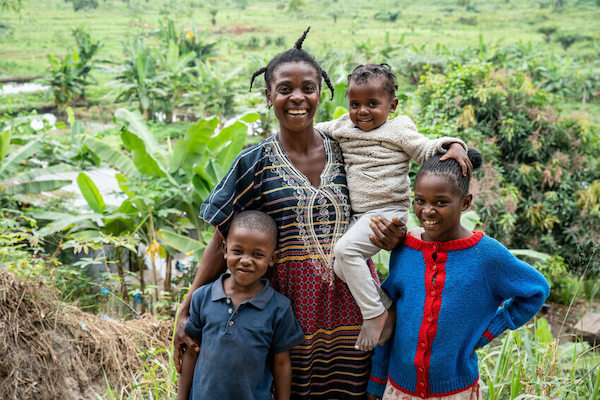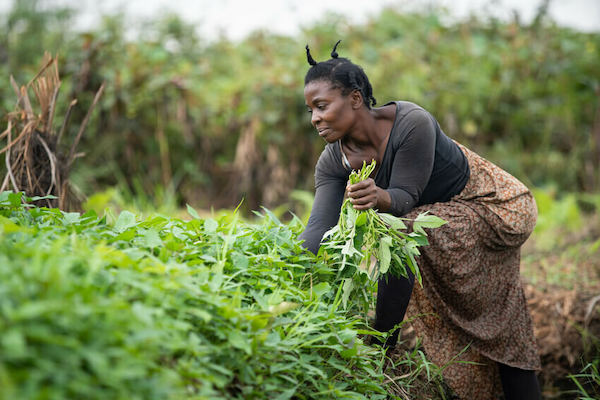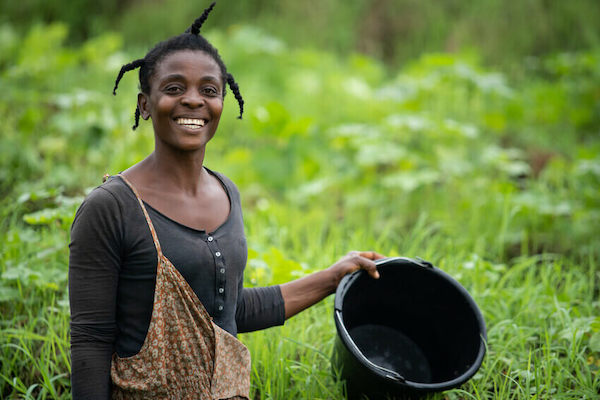Extreme poverty limits the future.
A family’s economic condition not only determines their immediate experiences—things like inadequate housing, poor health outcomes, and a dearth of educational opportunities—but also their imagined possibilities; their ability to design a better than the life they have now.
In the Democratic Republic of the Congo (DRC), the World Bank estimates that 73% of the population lives in this condition, known as extreme poverty—which is defined as living on less than $1.90 a day. That’s almost 60 million people who aren’t sure if they’ll be able to put food on the table, let alone how they’ll fill that table tomorrow, next week, or next year.
When an individual lives in doubt of where their next meal is coming from or where they will sleep in a few hours, they don’t always have the luxury of dreaming impossible dreams. On less than $1.90 each day, plans for a child’s education or preventative health measures become secondary to the most immediate needs.
UNICEF articulates this compounding nature of extreme poverty as “multidimensional poverty.”
Take, for example, the relationship between extreme poverty and health. According to The World Bank, poverty is not only “a major cause of ill health” but also “a barrier to accessing health care when needed.” Those living under the confines of $1.90 each day face constant exposure to health risks, including poor sanitation and a lack of access to preventative care. And when they do require urgent health care, they cannot afford it.
In 2017, half of the world went without access to health services, and healthcare expenses alone pushed 100 million individuals into extreme poverty. We’ve seen time and again just how essential health is to well-being, yet for those living in extreme poverty, it remains out of reach.
The same is true for safe and sanitary housing—another key element to thriving, healthy, sustainable livelihoods. It’s critical—yet it remains out of reach for millions of families.
Over and over, we realize that extreme poverty isn’t just about the money a family does or doesn’t have—it’s a situation defined by endless limits, including hunger, education, housing, health, and safety. There’s never enough to eat. Enough to save. Enough to give to your kids.
Worse, these limits extend across generations, creating a cycle of poverty that can feel impossible to break.
In the DRC, Opportunity recognized the multifaceted nature of extreme poverty and noted that the majority of people living in poverty are farmers. In response, we launched an Agriculture Finance program focused on the Ubangi region and Gemena, a community in the northwest part of the country. We are conducting market assessments of high-value crops, including coffee, cocoa, palm oil, peanuts, rice, and cassava, and we are working with farmer cooperatives to increase access to finance and training.
As part of the program, we also plan to launch banking services for small farmers and a Farmer Support Agent network so that families that rely on agriculture to survive can increase their yields, their incomes, and their possibilities.
In addition, we have introduced Education Finance programs in the DRC so that school proprietors can improve the quality of education they offer and students can stay in school. Through these two programs, we aim to help families work their way out of poverty today—and break the cycle of poverty for tomorrow.
The goal is simple: to support stability and productivity for people who have long been trapped by generational poverty, helping them engage in successful ventures, send their children to school, and plan for their futures.
One such woman is Micheline, a farmer and mother of five. After completing agricultural and financial training with Opportunity International, Micheline was able to completely transform both her financial and agriculture processes.

Prior to meeting Opportunity, Micheline sold flour and eventually began farming to improve her earnings. Still, “it was not a stable income.” Her husband is a truck driver, and his income also fluctuates. As a result, there were times where Micheline was unable to pay her children’s school fees, forcing her kids to stay home—and delaying their learning and progress.
“We would sometimes have to wait up to a week before we could gather the money for their fees,” she remembers. “And we used to have the same problem with rent.”

The training and resources Micheline received from Opportunity slowly began to break the limits in her life. “I would guess my harvest has tripled in size,” she shares. “I have also learned to correctly value my produce, as I used to sell it at any price when I needed the money, but the training has taught me not to sell at a loss.”
Now, Micheline is grateful for the stability that she’s built and hopeful for the future. “We bought a plot of land and are building a house of our own,” she says. And she’s not stopping now. “I’ve still got further to go.”
For the first time in her entire life, Micheline feels limitless.

She has broken the cycle of poverty in her family’s life, but millions of her neighbors are still trapped. But the good news is that we aren’t giving up.
In 2022, Opportunity launched a historic Waymaker campaign to empower 25 million people living in extreme poverty. The campaign will release $1 billion in impact for families just like Micheline’s.
Together, we can move the needle on extreme poverty. We can fight the root of countless challenges and remove barriers. We can change the story for families that are ready for limitless possibilities.


